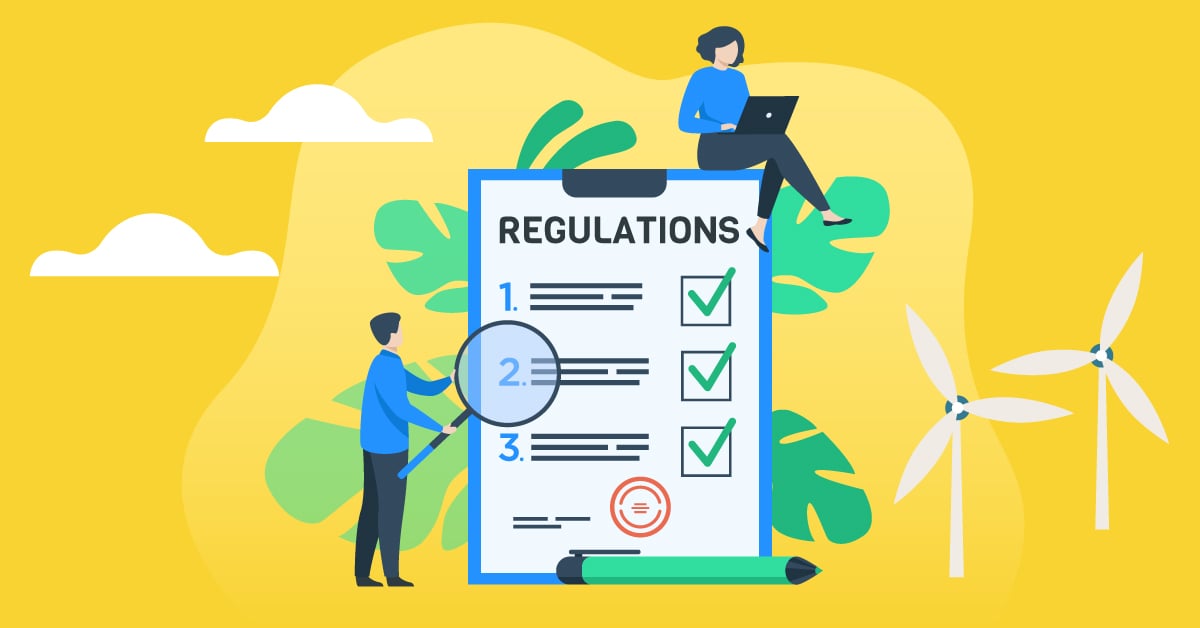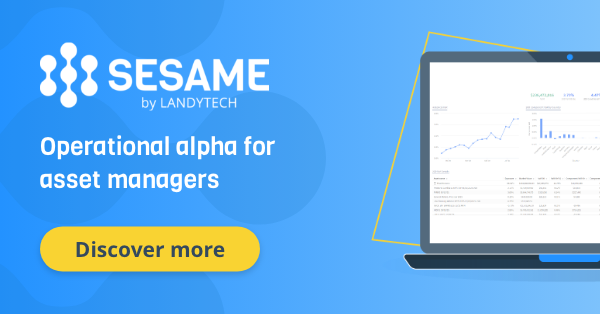/Logos/Landytech_LogoONLY_BleuSMALLER-1.png)
Written by Ben Goble
6 May 2022The EU has started to implement the Sustainable Finance Disclosure Regulation (SFDR), which sets out rules for classifying and reporting on sustainability and ESG factors in investments.
Forming part of the EU Financing Sustainable Growth Action Plan, SFDR was established with the following goals:
- Encourage investment in projects with a social or environmental objective
- standardise the reporting of sustainability traits, enhancing comparability between financial products
- increasing transparency of financial products with respect to sustainability
- prevent greenwashing – the act of presenting a financial product as more environmentally sound than it actually is, in an attempt to capitalise on the growing demand for these products
SFDR regulation applies to all financial market participants (FMPs) and financial advisors (FAs) in the EU, FMPs with EU shareholders, and those marketing themselves in the EU, setting out clear disclosure requirements when it comes to ESG considerations.
Since March 2021, FMPs managing funds and FAs providing advice have been required to make disclosures regarding how they integrate sustainability risks into investment decision making as well as the adverse sustainability impacts of the funds’ investments.
SFDR requires that UCITS and AIFMs must designate investment products as an Article 6, 8 or 9 fund, and make certain disclosures in-keeping with this choice. These pre-contractual disclosures are required to ensure that investors have greater transparency before entering an investment product or accepting advice.
One disclosure is a fund’s sustainability risk, which is the risk of an environmental, social or governance event that could cause an actual or a potential material negative impact on the value of the investment. Sustainability risk is required under all fund types to varying degrees.
Read on to find out the characteristics that define SFDR Article 6, 8 and 9 products and what these latest developments mean for asset managers.
What is an Article 6 product under SFDR?
Article 6 is the default classification for funds, and the one most appropriate for those with no ESG focus. This means funds that neither have a sustainable investment objective, nor do they embrace investment in assets with environmental or social benefits.
In this classification, incorporation of sustainability risks into investment decision making and the impact of sustainability risks on fund returns must be described in the fund's prospectus (AIF) or Private Placement Memorandum (PPM). Where a fund manager does not consider sustainability risk in the decision-making process, the disclosure should explain why under the principle comply or explain.
For Article 6 products there is also a requirement to publish a Principle Adverse Impact (PAI) statement or explain the choice not to. Financial market participants employing more than 500 staff are required to publish PAI statement. The PAI is a disclosure by the firm on possible harm that investment decisions may have on sustainability factors relating to environmental, social and employee matters, respect for human rights, anti‐ corruption and anti‐ bribery matters.
What are Article 8 and 9 funds under SFDR?
Unlike Article 6, Article 8 and 9 products are both considered to be sustainable, but with distinct differences. Under SFDR, funds promoted as ESG are required to classify as being either an Article 8 or 9 product, depending on whether they meet the criteria for either classification, with Article 9 products subject to the most stringent requirements. In both cases, products must also meet the Article 6 disclosure requirements.
Article 8 products
Under SFDR, Article 8 products promote investments or projects with positive environment or social characteristics and with good governance principles, alongside other non-ESG traits. Such promotion could include screening out certain environmental and socially harmful investments or considering ESG ratings when making investment decisions. If the investment product has a benchmark, the FMP must disclose whether the benchmark is consistent with the product’s promoted characteristics.
While sustainable investment is not an objective of the product, it remains an aspect of the investment process. Article 8 products need to disclose the degree (if any) to which they invest in environmentally sustainable investments or in investments with a social objective, as set out by EU Taxonomy regulations.
Article 9 products
Article 9 covers products that target a sustainable investment primary objective. A sustainable investment is an economic activity that contributes to an environmental or social objective. Products must comply with the ‘do no significant harm’ principle which means proving that the product does not in any way significantly harm any of the EU Taxonomy objectives. A benchmark index which aligns with the fund objective must also be chosen. The benchmark will then be used to measure achievement of the fund's sustainable investment objective.
What does this all mean for asset managers?
For firms that operate in the EU to be able to market investments as Article 8 or 9, they will need to review the whole lifecycle of products, from the initial product development and marketing, through to monitoring and reporting, updating policies and processes accordingly.
It is also important that firms develop processes to gather and store relevant data and information, to comply with the disclosure requirements of the respective articles.
Finally, there is a need to implement a risk management policy and framework that covers ESG and SFDR within the business, ensuring that this is updated to reflect ever-evolving sustainability reporting requirements, and that risk metrics are reviewed regularly at the fund and investment level.
For more information on complying with SFDR disclosures and general ESG data requirements, head to www.landytech.com/for-asset-managers.
Related Content

The data problem behind SFDR reporting and disclosures
SFDR is one of the largest pieces of ESG-related legislation rolled out anywhere in the world, and their compliance requirements are a daunting prospect for fund managers and wider financial market participants.
Under Level 1 of SFDR, market...

The asset manager’s how-to guide to ESG reporting
There has been an explosion in the popularity of environmental, social, and governance funds in recent years. In light of this growth, fund managers have been increasingly keen to step up their commitment to ESG and its measurement.The rewards for...

4 top trends driving the ESG reporting agenda in 2022
Interest in ESG has increased exponentially in recent years and there has been no sign of slowing in 2022, so far. But it is not just inflows to ESG funds that has been increasing. As policymakers turn their attention to environmental, social, and...




